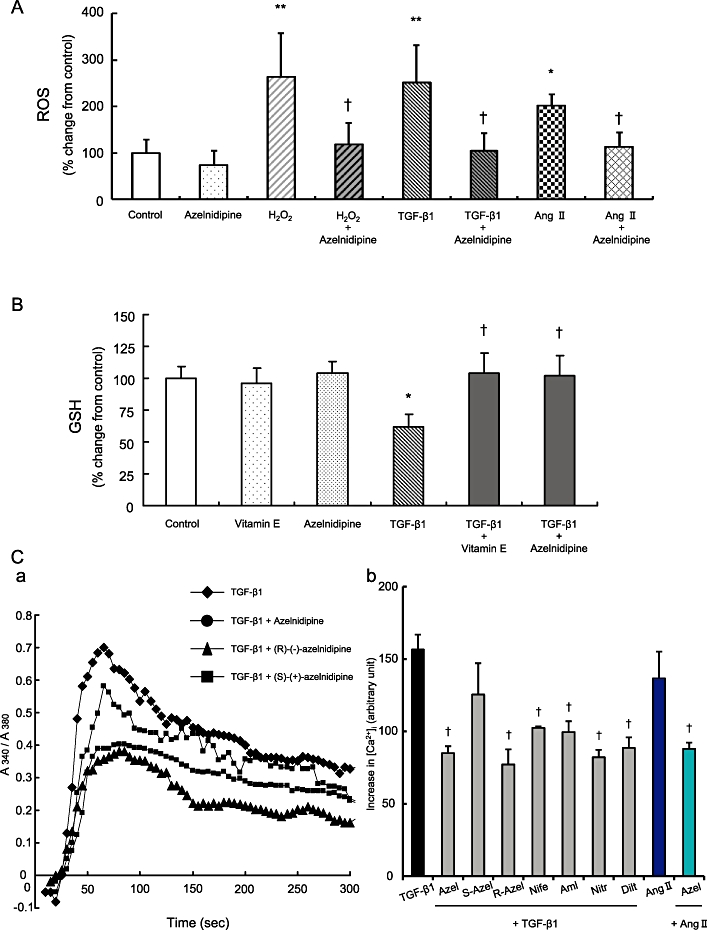Figure 2.

The effects of azelnidipine or vitamin E on stimulant-induced oxidative stress and the effects of various calcium blockers on the stimulant-induced increase in intracellular calcium concentration ([Ca]i) in LX-2 cells. The concentration of each calcium blocker was 100 nM, and TGF-β1, Ang II or H2O2 were applied at 10 ng·mL−1, 50 µM and 50 µM respectively. (A) TGF-β1-, Ang II-, or H2O2-induced increase of intracellular ROS and its inhibition by azelnidipine. (B) TGF-β1-induced decrease in glutathione levels and its inhibition by azelnidipine or vitamin E. (C) TGF-β1 or Ang II-induced increase in [Ca]i in LX-2 cells and its inhibition by various calcium blockers. Representative changes of [Ca]i (a) and the area under the curve (AUC) of [Ca]i with the indicated chemicals in LX-2 cells (b). *P < 0.05 versus control, **P < 0.01 versus control, and †P < 0.05 versus corresponding H2O2, TGF-β1 or Ang II. Azel, azelnidipine; S-Azel, (S)-(+)-azelnidipine; R-Azel, (R)-(+)-azelnidipine; Nife, nifedipine; Aml, amlodipine; Nitr, nitrendipine; Dilt, diltiazem.
